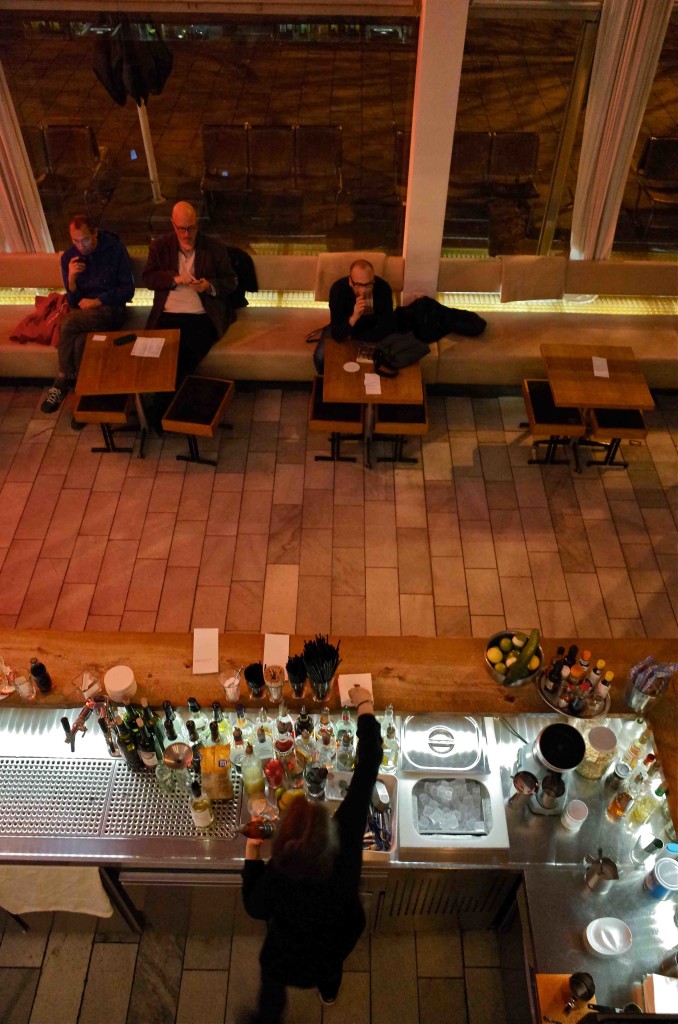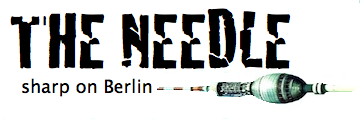Cocktails in a Communist Beauty Salon

What must be Berlins’ best cocktail bar is located in what was once a Communist beauty parlour on breezy Karl-Marx-Allee. I order a margarita and my friend a cosmopolitan. Not that you could get tequila or travel like a cosmopolitan in GDR times. The hue of the pink drink seems to match the ruddy dye of what I remember of Communist-world pensioner hair. I try to imagine those ladies having their shampoo and curlers in this remarkable modernist space on Stalin’s great avenue, but the gentle beat of electronic music intrudes, and I cannot.
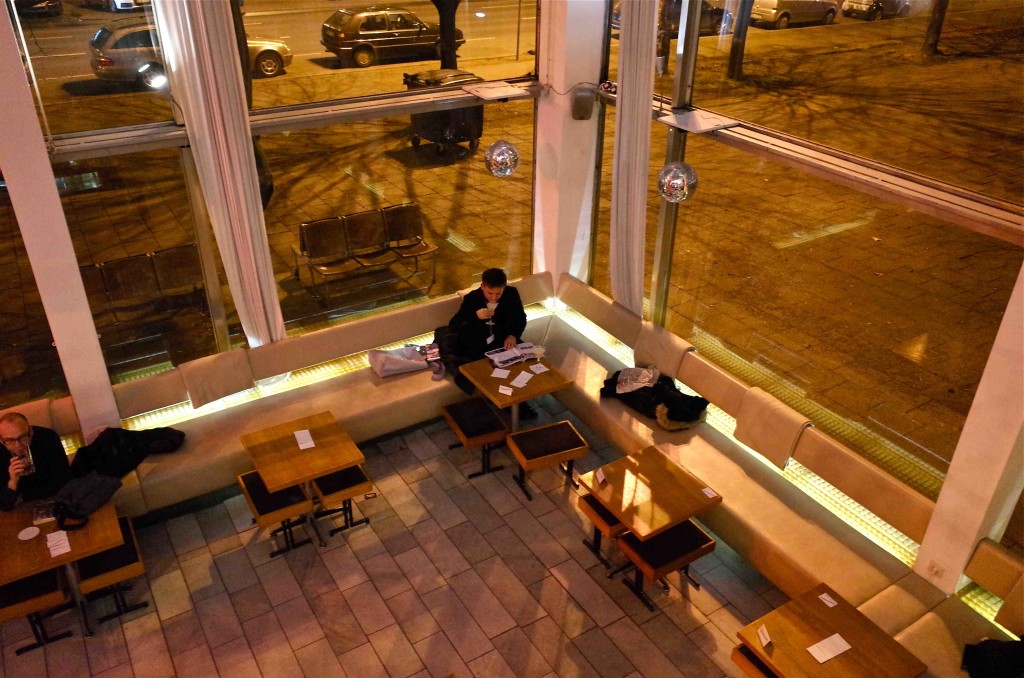
We are a world away here from that moment when the space first opened, as an exhibition for applied arts from the USSR, in 1962. By 1965 it had become a beauty parlour––the Kosmetiksalon just one of an ensemble of buildings directed by architect Josef Kaiser that includes the celebrated cinema Kino International, the Mokka-Milch-Eisbar, and Café Moskau. They represented a departure from the Stalinist socialist classical buildings which first lined the avenue, moving towards a mid-century modernism already found on the other side of the Wall, such as in the House of World Cultures (you can read about those modernist interiors here). I imagine the architects, and their relief at the passing of Stalin, imagining a different future, and expressing that future’s aspiration in these spaces.
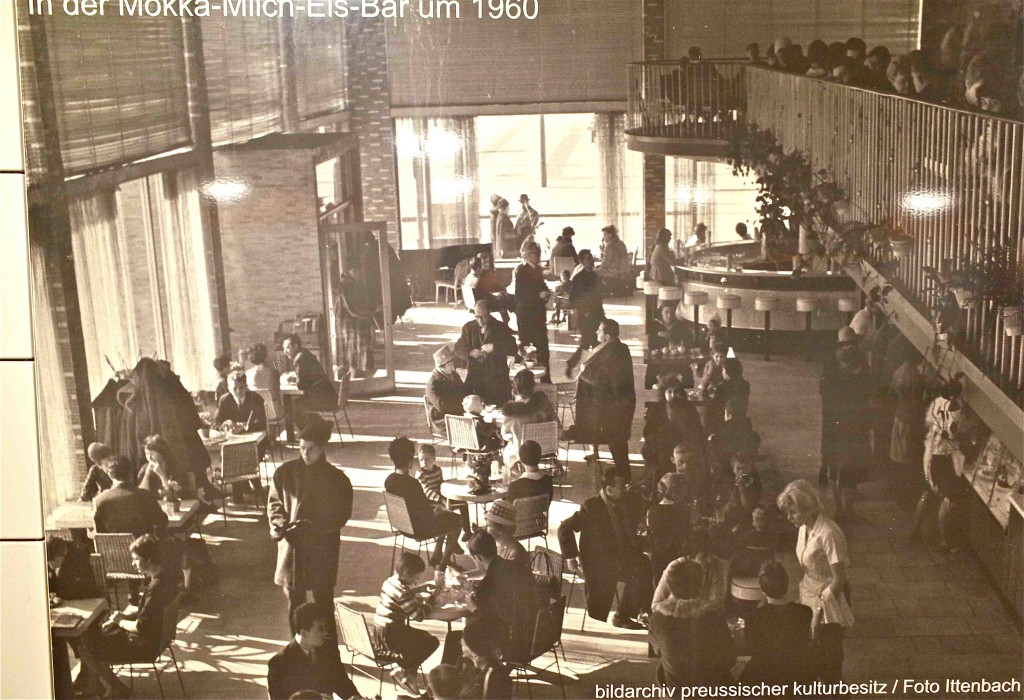
It was also meant to be a model of thrift, Khrushchev exorting architects to build ‘better, faster and cheaper!’ The vast open interior spaces are held minimally by concrete frames and large glass surfaces facing the street. Pinching that margarita within the airy space, I might take one sip too many and float away.
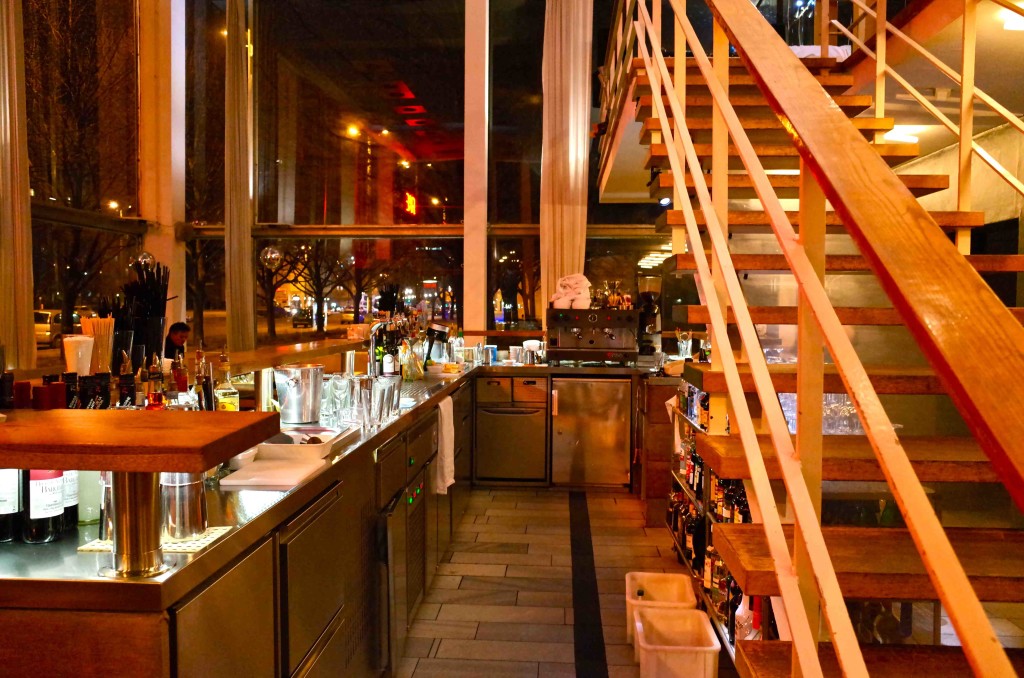
The beauty parlour closed in 1992, in 2003 it reopened as a bar, and since 2008 has taken its old name, Kosmetiksalon Babette. I try to think about what’s sexy about drinking a cocktail in a former temple to East German fashion (which often seems stylistically perverse, or simply unfamiliar and odd to me). Is it that Berlin hankering for converted spaces? We are the city where an airport is a park, a power plant is a nightclub. Here you down cocktails where freshly-cut locks of hair used to litter the tile.
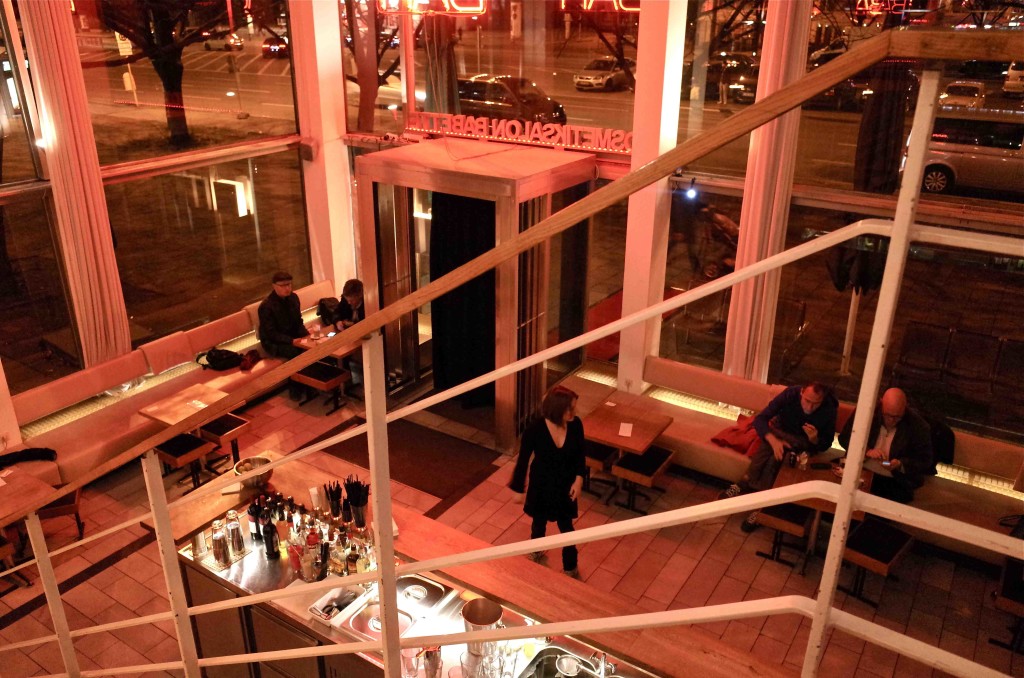
I wander up the stairs to look down on the assembled clientele, the lights of the street and cinema beyond along the great avenue. The night outside is cold. The low lights, the steel of the bar, the reflections on the glass, give Babette a futuristic feel. And perhaps that is the great charm of this converted space. The counterfactual futurism of it, and the restoration of that vision. The art of making something contemporary from a building which, a long time ago, under another system, in a different country, also wished to represent the future.
I’ll have another one of those, please.
